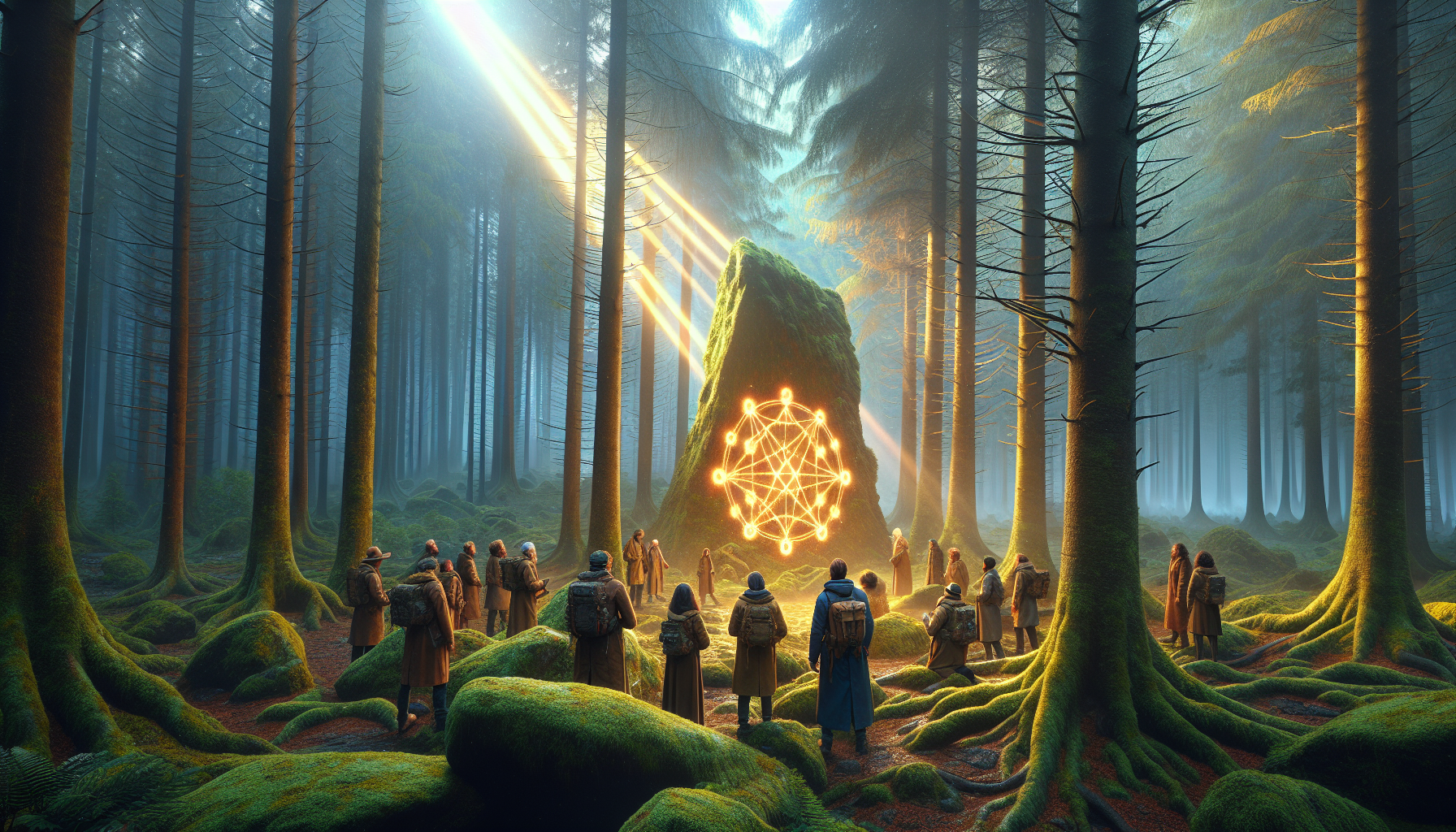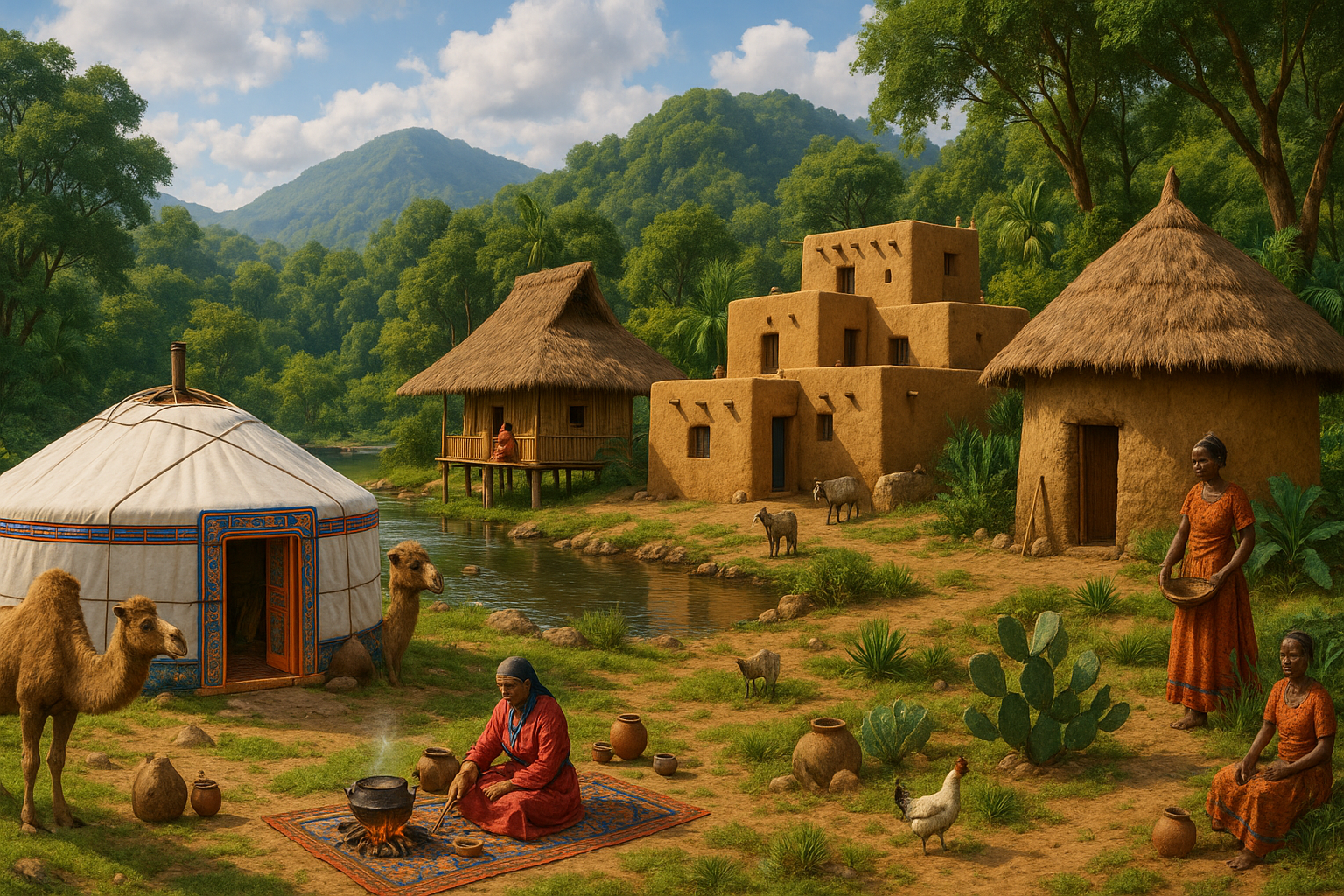Nature has always been a source of wonder and mystery, captivating the human imagination for centuries. From the ethereal dance of the Northern Lights to the deep, resonant call of a distant thunderstorm, our planet is a canvas painted with phenomena that both enchant and perplex. These natural spectacles are not just mere occurrences; they are narratives waiting to be unraveled, each with a story to tell, a mystery to solve, and a lesson to impart. 🌍✨ As we embark on this journey to explore nature’s secrets, we invite you to look beyond the surface and delve into the intricate explanations that lie beneath.
In this article, we will uncover the mysteries behind some of the most fascinating natural phenomena that our world has to offer. Why does the sky change its color at sunset? What causes the mesmerizing patterns in snowflakes? How do certain animals navigate their way across vast oceans? These questions have long intrigued scientists and laypeople alike, prompting a pursuit of knowledge that has led to some astonishing discoveries. By examining these phenomena, we not only gain insights into the mechanics of the natural world but also develop a deeper appreciation for the complexity and interconnectedness of life on Earth.
Our exploration will begin with the captivating auroras, often seen dancing across polar skies. These luminous displays of color and light have inspired countless myths and legends, but the true science behind them is even more fascinating. We will delve into the interplay of solar winds and the Earth’s magnetic field, uncovering how particles from the sun create such a breathtaking spectacle. From there, we’ll journey into the heart of meteorological wonders, deciphering the forces that drive powerful hurricanes, the serene beauty of rainbows, and the eerie yet awe-inspiring glow of bioluminescent waves. Each of these phenomena is a testament to nature’s creativity, a vivid reminder of the dynamic processes that shape our environment.
As we proceed, we’ll also take a closer look at the animal kingdom, where nature’s ingenuity is on full display. Discover how migratory birds use the stars as their compass, and how certain marine creatures possess an innate ability to detect the Earth’s magnetic fields. These extraordinary skills highlight the evolutionary adaptations that have allowed species to thrive in their respective habitats. 🌊🐦 By the end of this journey, we hope to not only satisfy your curiosity but also inspire a sense of wonder and respect for the natural world. Join us as we unravel these tales of natural phenomena, revealing the incredible stories behind the beauty and mystery that surround us every day.
The Enigma of Aurora Borealis
The Aurora Borealis, often called the Northern Lights, is one of the most mesmerizing natural phenomena observable in the polar regions. The vivid display of colors lighting up the night sky has been the subject of myths and scientific inquiry for centuries. At its core, the aurora is a result of collisions between gaseous particles in Earth’s atmosphere with charged particles released from the sun’s atmosphere. The intensity and color of the aurora depend on the type of gas particles that collide. While oxygen at higher altitudes produces red and green hues, nitrogen results in purples and blues. This phenomenon has inspired countless tales and continues to captivate those fortunate enough to witness it.
Understanding the science behind the aurora borealis involves delving into solar winds and the Earth’s magnetic field. Solar winds are streams of particles emanating from the sun, and when they reach Earth, they are mostly deflected by the planet’s magnetic field. However, some particles are trapped and guided towards the poles, where they collide with atmospheric gases. The excitement and subsequent relaxation of these gases lead to the emission of light, thus creating the aurora. Scientists have been able to predict auroral activity by monitoring solar winds, providing a fascinating intersection of natural beauty and scientific predictability.
The aurora borealis not only intrigues onlookers but also offers insights into space weather and its impact on Earth. Understanding these interactions is crucial for technologies reliant on satellite communications and navigation systems. Increased auroral activity can lead to geomagnetic storms, which may disrupt these systems. By studying the aurora, scientists can develop better forecasting models to mitigate such risks. This natural wonder thus serves as both a breathtaking spectacle and a vital area of scientific research, bridging the gap between aesthetic appreciation and practical application.
Watch this spectacular aurora borealis display: Aurora Borealis Timelapse – Nature Relaxation Films
The Mysteries of Bioluminescence
Bioluminescence is the production and emission of light by living organisms, a phenomenon that has sparked curiosity and wonder throughout history. It is most commonly observed in marine environments, where organisms such as jellyfish, plankton, and certain fish exhibit glowing characteristics. This captivating light is a result of biochemical reactions within these organisms, involving the enzyme luciferase acting on the substrate luciferin, producing light. Bioluminescence serves various purposes, from attracting mates and deterring predators to luring prey.
In the depths of the ocean, where sunlight cannot penetrate, bioluminescence becomes a critical survival mechanism. Many deep-sea creatures rely on this form of communication to interact with their environment. For instance, some species of anglerfish use a bioluminescent lure to attract unsuspecting prey. On the other hand, the shimmering light produced by certain species can act as a defense mechanism, confusing or scaring off potential threats. The dual functionality of bioluminescence as both an offensive and defensive tool underscores its evolutionary significance.
Recent research has expanded our understanding of bioluminescence beyond its natural context. Scientists are exploring its applications in various fields, including medicine and biotechnology. For example, bioluminescent markers are used in research to study cellular processes, while bioluminescent sensors have the potential to detect environmental pollutants. The ability to harness and replicate bioluminescent properties opens up new avenues for innovation, demonstrating how a naturally occurring phenomenon can inspire technological advancements.
The Intrigue of Fata Morgana
Fata Morgana is a complex form of mirage that occurs when rays of light bend as they pass through layers of air at different temperatures. This phenomenon often results in the appearance of distorted or elongated images that seem to float above the horizon. Named after the sorceress Morgan le Fay from Arthurian legend, Fata Morgana has been responsible for numerous maritime myths and legends, with sailors reporting sightings of ghostly ships and distant lands.
The science behind Fata Morgana involves a temperature inversion, where a layer of warm air sits above a layer of cooler air. As light passes through these varying temperatures, it refracts, bending the light rays and creating optical illusions. These mirages are more commonly observed over large bodies of water, where the conditions for temperature inversion are more prevalent. Despite being a well-documented phenomenon, Fata Morgana continues to capture the imagination of those who witness it.
Interestingly, Fata Morgana has been linked to some historical mysteries and legends. The phenomenon has been suggested as a possible explanation for sightings of the legendary Flying Dutchman and other maritime lore. Understanding Fata Morgana not only enhances our appreciation of the natural world but also provides insight into how such phenomena have shaped cultural narratives and historical accounts.
| Phenomenon | Description | Scientific Explanation |
|---|---|---|
| Aurora Borealis | Colorful lights visible near polar regions | Collisions between atmospheric gases and solar particles |
| Bioluminescence | Light emission by living organisms | Biochemical reaction involving luciferase and luciferin |
| Fata Morgana | Complex mirage creating distorted images | Light refraction through temperature inversion layers |
For more captivating insights into natural phenomena, explore the wonders of bioluminescence and how it inspires technology today.
- Discover the science behind the awe-inspiring aurora borealis.
- Explore the practical applications of bioluminescence in modern science.
- Learn how Fata Morgana has influenced maritime legends.

Conclusion
Conclusion: Nature’s Mysteries Unraveled: Tales of Explaining Natural Phenomena
As we journey through the awe-inspiring landscapes and delve into the intricate workings of our natural world, we are continuously reminded of the profound mysteries that nature presents. This article has explored several fascinating phenomena, each unveiling a chapter of the grand story written by the forces of nature. From the ethereal dance of the Northern Lights to the perplexing patterns of animal migration, we have embarked on a voyage that bridges the gap between wonder and understanding.
To recap, we began our exploration with the mesmerizing Northern Lights, or Aurora Borealis, a spectacle that has captivated humanity for centuries. The interplay between solar winds and the Earth’s magnetic field creates this celestial ballet, painting the night sky with hues of green, pink, and violet. Understanding the science behind this phenomenon not only enriches our appreciation but also highlights the interconnectedness of cosmic and terrestrial events.
Next, we ventured into the realm of animal migration, where creatures of all sizes embark on incredible journeys across the globe. From the Monarch butterflies’ transcontinental flight to the epic crossings of wildebeests on the African plains, these migrations are a testament to nature’s precision and resilience. The navigational prowess exhibited by these animals, often over thousands of miles, continues to inspire awe and curiosity.
We also explored the intricate world of bioluminescence, where nature’s glow lights up the darkest corners of the earth. This natural light show, produced by organisms ranging from deep-sea creatures to forest fungi, serves various ecological purposes such as communication, predation, and camouflage. Bioluminescence not only adds a layer of mystery to our natural world but also has practical implications in scientific research, particularly in the fields of genetics and medicine.
Furthermore, we delved into the phenomenon of supervolcanoes, geological giants that hold the power to reshape landscapes and influence global climates. Understanding the mechanisms that drive these massive eruptions aids in assessing potential risks and preparing for future events. The study of supervolcanoes underscores the dynamic nature of our planet and the need for ongoing research and monitoring.
Throughout our exploration, the recurring theme has been the intricate balance and interconnectedness that nature maintains. Each phenomenon, while a mystery in its own right, is a piece of the larger puzzle that makes up our natural world. The pursuit of understanding these mysteries not only satisfies our intellectual curiosity but also equips us to make informed decisions that impact our environment and future.
The importance of unraveling nature’s mysteries cannot be overstated. As we face global challenges such as climate change, biodiversity loss, and ecological imbalances, understanding natural phenomena becomes crucial in formulating effective conservation strategies and fostering sustainable development. By appreciating the complexity and beauty of these natural occurrences, we are reminded of our responsibility to protect and preserve the world we inhabit.
In conclusion, nature’s mysteries are not just puzzles to be solved but are stories that connect us to the earth and to each other. They inspire wonder, drive scientific inquiry, and ultimately, cultivate a deeper respect for the world around us. As we continue to explore and learn, let us carry forward this spirit of curiosity and stewardship.
I encourage you, dear reader, to reflect on what you’ve learned and to share these stories with others. Whether through a conversation with a friend, a social media post, or your personal exploration of nature, spreading awareness is key to fostering a collective appreciation for our planet. 🌍✨
Feel free to leave your thoughts and comments below. How have these natural wonders inspired you? Are there other phenomena you are curious about? Your insights and questions are valuable as we continue this journey of discovery together.
For further reading and exploration, consider checking out resources such as National Geographic National Geographic, which offers in-depth articles and stunning visuals on a wide array of natural phenomena. Similarly, the Smithsonian Institution Smithsonian Institution provides valuable scientific research and exhibitions on various topics related to nature and the environment.
Let us remain inspired by the wonders of our world and committed to understanding and preserving its mysteries for generations to come. 🌿🔍
Toni Santos is a visual storyteller and experimental artisan whose work explores the strange frontiers where science meets art. Fascinated by the forgotten, the obscure, and the wonderfully absurd, Toni brings bizarre scientific experiments to life through provocative visual narratives and handcrafted creations that blur the line between curiosity and discovery.
His journey is rooted in a passion for the eccentric side of science — from electric shocks on cadavers to botany in hostile environments, from Victorian medical oddities to animal behavior gone rogue. Each project Toni undertakes sheds light on real (and sometimes questionable) scientific ventures that push the boundaries of human understanding.
With a background in visual design and hands-on craftsmanship, Toni blends artistic precision with conceptual boldness. His creations aren’t just decorative — they provoke, disturb, and invite the viewer to reconsider what counts as science, progress, or even sanity. Often inspired by true experiments — like galvanic resurrection, psychological endurance tests, or 19th-century pseudo-science rituals — Toni’s work reanimates these bizarre chapters of history with aesthetic intrigue and critical reflection.
As the creative force behind Vizovex, Toni invites you to explore a world where the strange becomes symbolic, the grotesque becomes beautiful, and every experiment tells a story worth unearthing.
His work pays tribute to:
The brilliant madness of forgotten experiments
The symbolic power of science at the edge of reason
The beauty in questioning what we think we know
Whether you’re a curious mind, a lover of scientific history, or simply drawn to the uncanny, Toni welcomes you to explore a realm where aesthetics and absurdity collide — one experiment, one mystery, one creation at a time.





